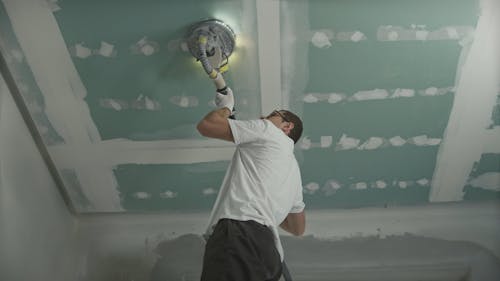How To: Dry when Taping and Mudding (With Drywall Shorty)

Drying wet drywall is a common occurrence during the construction process. Whether it’s from Thick layer of mud or an excess amount of moisture in your air, wet walls are still wet. This can cause many delays if you don’t have a plan ready to go. Luckily, drying wet drywall isn’t a huge hassle and it doesn’t take that much time. If you follow these steps, you will be finished before you know it:
Plan your drying process
Before you begin, you need to figure out how long you are going to leave the walls wet and then how long you will wait to take the walls down. This can be a little tricky, especially if there is an excess of moisture in your air. Depending on the circumstances, you can choose to wait a few days or weeks for the walls to dry. If the humidity levels are too high, the walls will stay damp and could even remain wet for a few weeks. Alternatively, if the humidity is low, the walls will dry up faster.
Check your supply line
When you begin the drying process, you need to make sure the fans you have are working! If not, you are going to wait a long time. Make sure the flow of air is going through rooms and not just facing a wall. If the Air system of the building is operational, but has very little air flow due to construction dust or some other blockage, you can unblock the ducts and get the fans back into action by combing through the ductwork with a long-handled brush or a pair of long nippers.
Turn on the fan
When you begin the drying process, you will need to turn on your fans. This is going to help move air through the walls and get the moisture out of the walls. Turn the fan on low and then gradually increase the speed until it is blowing the air into the walls. You don’t have to blast the walls with air, but you do want to make sure that the air is going through the space and not just leaving the fan.
Keep the humidity down
As the walls dry, you need to keep the humidity levels down. If the humidity is too high, the walls are going to stay wet and you may have a problem later on. To lower the humidity levels, use a dehumidifier or set up a tray under your air conditioner.
Wait for it to dry
Inspect the walls after a day or so and make sure they are completely dry. If they aren’t, add more fans, dehumidifiers and/or heaters and wait for it to dry. You don’t want to leave the walls damp for too long, as this can cause mold and mildew to grow. If the walls are damp for too long, they will become slimy and stained.

Sand and paint when dry
If the walls are dry, then you can sand and paint. You will want to remove the uneven mud and edges. You can also use a sanding block, pole sander to smooth out the walls, if you're doing larger areas, a power sander with dust collection has many advantages. Check out all your work with a light on a slight angle. The light should ideally be as close to natural sunlight. Now you should be ready to prime your work and paint your favorite colors!

